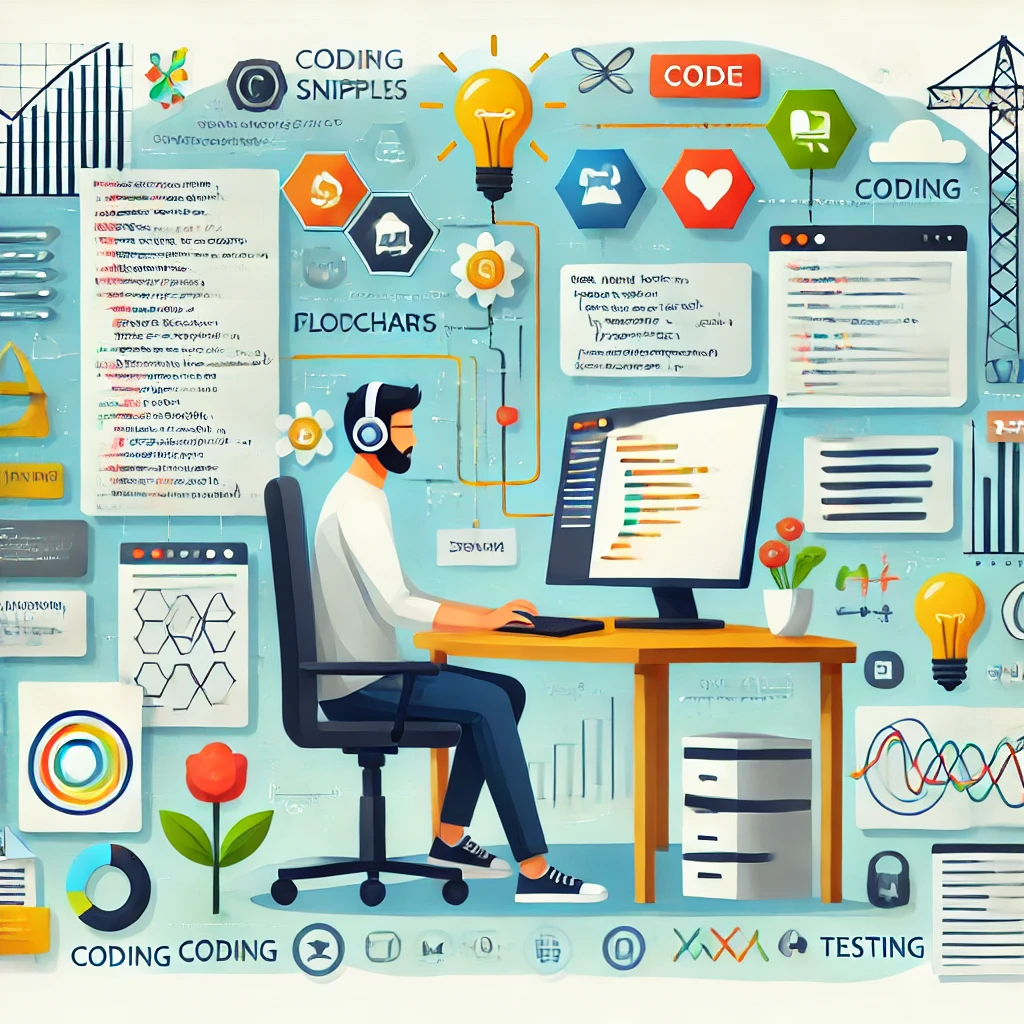Software development forms the backbone of modern technology. It encompasses the process of designing, creating, testing, and maintaining software applications. These applications range from mobile apps to large-scale enterprise systems, impacting everyday life and business operations.
The Basics of Software Development
Software development involves several stages, each contributing to the creation of functional and efficient software. These stages include requirements gathering, design, implementation, testing, deployment, and maintenance. Each phase plays a critical role in ensuring that the final product meets user needs and functions as intended.
1. Requirements Gathering
The first step in software development involves identifying what the software needs to accomplish. Stakeholders, including clients and end-users, provide input on their expectations and requirements. This phase often includes interviews, surveys, and discussions to clarify needs. Clear communication during this phase helps prevent misunderstandings later in the project.
2. Design
Once the requirements are established, the design phase begins. Developers and designers create blueprints for the software architecture. This includes defining how the software will function, what features it will include, and how users will interact with it. Designers often create wireframes and prototypes to visualize the final product. This phase helps identify potential challenges and allows for adjustments before actual coding begins.
3. Implementation
Implementation, or coding, represents the heart of software development. Developers write the actual code using programming languages such as Java, Python, C#, or JavaScript. They follow the design specifications established in the previous phase to create functional software components. This phase requires careful attention to detail, as even small errors can lead to significant issues later.
4. Testing
Testing occurs simultaneously with implementation but also serves as a distinct phase. Developers conduct various tests to ensure the software works as expected. This includes unit testing, integration testing, system testing, and user acceptance testing. Each type of testing serves a specific purpose:
- Unit Testing: Tests individual components for functionality.
- Integration Testing: Ensures that different components work together seamlessly.
- System Testing: Evaluates the entire system’s performance and behavior.
- User Acceptance Testing: Involves end-users to validate that the software meets their needs.
Identifying and fixing bugs during testing prevents problems in production. Effective testing saves time and resources by addressing issues before deployment.
5. Deployment
Once testing confirms that the software functions correctly, the team moves to deployment. This phase involves releasing the software to users. Developers ensure that installation processes are smooth and that users have access to the software. They often provide training or documentation to assist users in navigating the new system.
6. Maintenance
Software development doesn’t end with deployment. Maintenance plays a crucial role in keeping software functional and relevant. Developers monitor performance and address any bugs or issues that arise. They may also implement updates and improvements based on user feedback. Regular maintenance ensures that the software remains efficient and continues to meet user needs over time.
Software Development Methodologies
Various methodologies guide the software development process. Each has its own principles and practices, catering to different project needs and team structures.
Agile Development
Agile development emphasizes flexibility and collaboration. Teams work in short iterations called sprints, focusing on delivering small, functional increments of the software. This approach allows for continuous feedback and adjustments throughout the development cycle. Agile teams prioritize customer involvement and adapt to changing requirements, making it suitable for dynamic projects.
Waterfall Model
The Waterfall model represents a linear approach to software development. Each phase must be completed before moving on to the next. This model works well for projects with well-defined requirements, but it can be inflexible in accommodating changes. The Waterfall model is often used in industries where compliance and documentation are essential.
DevOps
DevOps combines development and operations to improve collaboration and efficiency. This methodology promotes continuous integration and continuous delivery (CI/CD), allowing teams to release updates more frequently. DevOps emphasizes automation, monitoring, and feedback loops, resulting in faster software delivery and enhanced reliability.
Scrum
Scrum represents a framework within the Agile methodology. It divides projects into fixed-length iterations called sprints, usually lasting two to four weeks. Scrum teams hold daily stand-up meetings to discuss progress and address challenges. This structure fosters accountability and encourages team members to work collaboratively toward shared goals.
Tools and Technologies in Software Development
Various tools and technologies support software development efforts. These tools streamline processes, improve collaboration, and enhance productivity.
Integrated Development Environments (IDEs)
IDEs provide developers with a comprehensive environment for writing and testing code. Popular IDEs like Visual Studio, IntelliJ IDEA, and Eclipse offer features such as code completion, debugging tools, and version control integration. These tools simplify the coding process and improve efficiency.
Version Control Systems
Version control systems, such as Git, track changes to the codebase over time. They enable multiple developers to collaborate on a project without overwriting each other’s work. Version control allows teams to revert to previous versions, manage branching, and ensure a clear history of changes.
Project Management Tools
Project management tools like Jira, Trello, and Asana help teams organize tasks and track progress. These tools provide visibility into project timelines, assign responsibilities, and facilitate communication among team members. Effective project management contributes to timely software delivery.
Testing Frameworks
Automated testing frameworks such as Selenium, JUnit, and pytest enable developers to conduct tests efficiently. These frameworks streamline the testing process, allowing teams to run tests frequently and catch bugs early. Automation enhances the reliability of testing efforts.
The Importance of Collaboration
Collaboration stands at the core of successful software development. Teams consist of developers, designers, project managers, and stakeholders who work together to achieve common goals. Effective communication fosters a shared understanding of requirements and expectations. Regular meetings, brainstorming sessions, and feedback loops ensure that everyone stays aligned throughout the development process.
Challenges in Software Development
Software development comes with its own set of challenges. Addressing these challenges proactively can lead to more successful projects.
Changing Requirements
Changing requirements can disrupt the development process. Stakeholders may alter their needs or expectations, leading to scope creep. Teams should establish clear communication channels and flexible methodologies to adapt to changes without derailing the project.
Time Constraints
Time constraints often pressure development teams to deliver software quickly. Rushed development can result in incomplete features or poor-quality code. Prioritizing features and managing timelines effectively helps teams balance speed and quality.
Technical Debt
Technical debt refers to the shortcuts taken during development to meet deadlines. Accumulating technical debt can lead to complex code and increased maintenance costs. Teams should address technical debt regularly, refactoring code as needed to maintain a healthy codebase.
Security Concerns
Security represents a critical aspect of software development. Developers must implement robust security measures to protect user data and prevent breaches. Conducting regular security audits and adhering to best practices reduces vulnerabilities in the software.
The Future of Software Development
The future of full cycle software development looks promising, with emerging technologies shaping the landscape. Artificial intelligence, machine learning, and cloud computing play pivotal roles in transforming how developers create and deploy software.
Artificial Intelligence and Machine Learning
AI and machine learning empower developers to build smarter applications. These technologies enable software to learn from data, adapt to user behavior, and automate complex tasks. Integration of AI capabilities enhances software functionality and user experience.
Cloud Computing
Cloud computing revolutionizes software deployment and scalability. Developers can leverage cloud services to host applications, access resources on demand, and scale as needed. This flexibility allows teams to focus on development without worrying about infrastructure management.
Low-Code and No-Code Development
Low-code and no-code platforms democratize software development. These platforms allow users with minimal programming knowledge to create applications through visual interfaces. This shift accelerates the development process and expands access to software creation.
Conclusion
Software development represents a dynamic and essential field, driving technological advancements and influencing everyday life. The process involves multiple stages, methodologies, tools, and collaboration among diverse teams. By navigating challenges and embracing emerging technologies, developers can create innovative software that meets the evolving needs of users and businesses alike.




